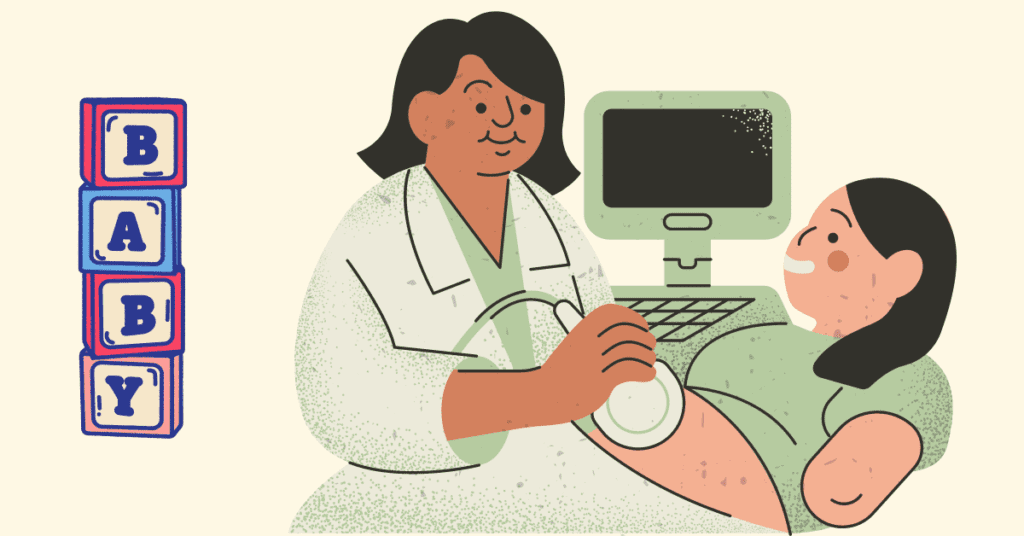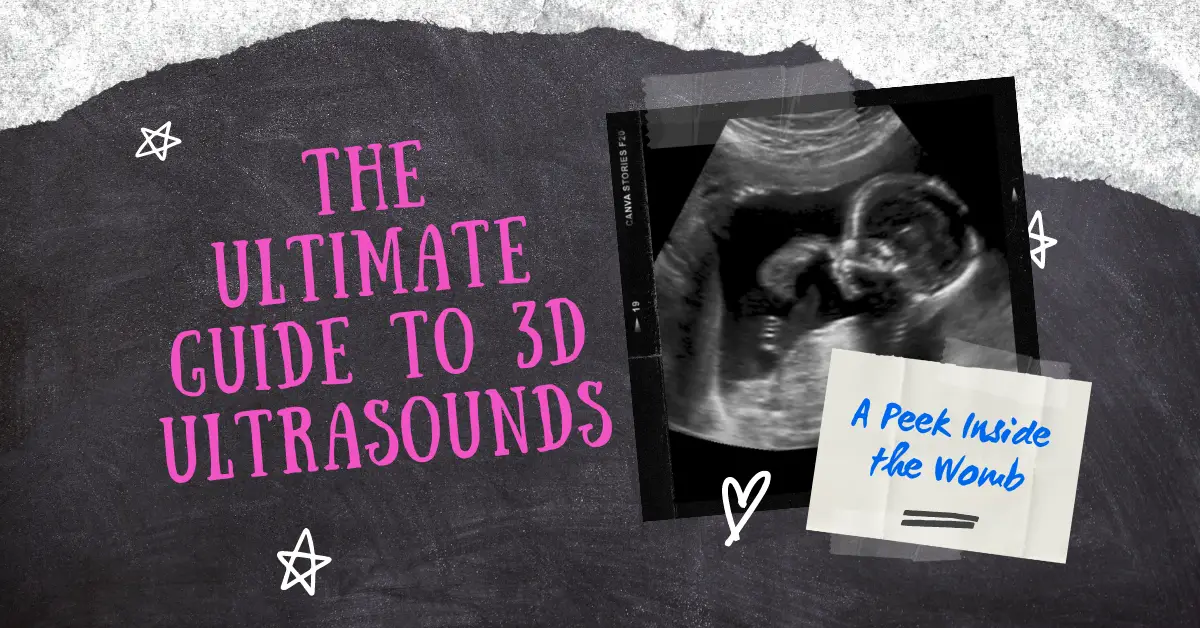The Bumps, the Kicks, and the In-Utero Hairdos!
Hey there, all you beautiful mommas and daddies-to-be! Welcome to the wonderful world of 3D ultrasounds, where we’ll give you the inside scoop on this technological marvel that allows you to take a sneak peek at your little bundle of joy. So, grab a snack, put up your feet, and join us as we explore the ins and outs of the 3D ultrasound experience.
What is a 3D Ultrasound?
A 3D ultrasound is a specialized imaging technique that captures three-dimensional images of your baby in the womb. Unlike the traditional 2D ultrasound, which provides flat, black-and-white images, 3D ultrasounds offer detailed, lifelike images that reveal your baby’s facial features, limbs, and other physical characteristics. This amazing technology uses sound waves to create a series of slices, which are then combined by a computer to generate a complete picture of your little one. The result? A truly magical and memorable glimpse of your baby, providing you with a heartwarming preview of the tiny human you’re growing inside!
Need ideas for the nursery? We’ve put together a collection of DIY projects to spruce it up!
What is the Difference – 2D Doppler, 3D, and 4D Ultrasounds
Navigating the world of prenatal imaging can be a bit overwhelming, especially when you’re trying to understand the differences between 2D Doppler, 3D, and 4D ultrasounds. Let’s break down the key differences between these imaging techniques, so you can make an informed decision about what’s best for you and your baby.
2D Doppler Ultrasound
A 2D Doppler ultrasound is the most common and widely used prenatal imaging technique. It produces flat, two-dimensional, black-and-white images of your baby, showing its internal organs, bones, and overall outline. The Doppler component refers to the ultrasound’s ability to measure blood flow in the umbilical cord, the baby’s heart, and other blood vessels. This helps healthcare providers assess the health and well-being of your baby during pregnancy.
3D Ultrasound
As we discussed earlier, 3D ultrasounds create three-dimensional, lifelike images of your baby in the womb. These detailed images give you a better view of your baby’s facial features, limbs, and other physical characteristics. While 3D ultrasounds are not typically used for routine prenatal care, they can sometimes provide additional information about your baby’s development or be used for keepsake purposes.
4D Ultrasound
A 4D ultrasound is essentially a 3D ultrasound in motion. It takes multiple three-dimensional images in real time, creating a moving video of your baby in the womb. This allows you to see your baby’s movements, facial expressions, and even hiccups! Like 3D ultrasounds, 4D ultrasounds are not a standard part of prenatal care, but they can be an exciting way for parents-to-be to bond with their baby before birth.
While 2D Doppler ultrasounds are the go-to choice for routine prenatal care and monitoring your baby’s health, 3D and 4D ultrasounds offer a more detailed and lifelike view of your baby, which can be a special bonding experience for parents. Always consult with your healthcare provider to determine the best imaging options for your specific situation and remember that the most important thing is to ensure the health and well-being of your little one.
Psst. We have a secret parenting club where you get great content sent right to you. Sign up below
Is 26 Weeks Too Early?
You might be wondering if 26 weeks is a tad too early for a 3D ultrasound. Well, the truth is, there’s no hard and fast rule. Each pregnancy is as unique as the baby it produces, and the best time to have a 3D ultrasound can vary. However, the general recommendation is to wait until between 28 and 32 weeks. Why? Because by that time, your baby has had enough time to store some adorable baby fat, which gives those cheeks a pinch-worthy plumpness!
Can You See Hair on a 3D Ultrasound?
Now, let’s address the hairy question on everyone’s minds. Can you see hair on a 3D ultrasound? The answer is a resounding…maybe! The ultrasound technology can sometimes pick up hair, but it’s not guaranteed. Factors like the baby’s position and the amount of amniotic fluid surrounding them can affect visibility. But hey, who needs a heads up on their baby’s hairstyle when you’re guaranteed a fabulous surprise on D-day?
What aren’t pregnancy classes telling you about after the baby is out? Here’s what we learned!
27 Week Ultrasounds
If you’re at 27 weeks and considering a 3D ultrasound, you’re not far off from the sweet spot! While it’s still a bit early, you might catch a glimpse of your baby’s precious features taking shape. Just remember, the images might not be as clear as those taken a few weeks later. But don’t worry, even if you don’t get the perfect picture, you’ll still have a heartwarming bonding experience with your little one!
Hair on Ultrasound vs. Birth
One of the exciting mysteries of pregnancy is wondering if your baby will be born with a full head of hair or a smooth, bald head. While a 3D ultrasound may give you some clues, it’s important to remember that the images are not always a perfect predictor of the final result. Babies have been known to surprise their parents by arriving with more or less hair than was visible on the ultrasound. So, prepare to be amazed and remember, whether they’re rocking a mohawk or a shiny bald head, your baby will be perfect in your eyes!

What to Expect During a 3D Ultrasound
Now that you’re all caught up on the differences between various ultrasound types, let’s dive into what you can expect during a 3D ultrasound appointment. First, you’ll be asked to lie down on an examination table, and your belly will be exposed. A trained ultrasound technician or medical professional will then apply a water-based gel to your abdomen, which helps the ultrasound transducer glide smoothly across your skin and improves the transmission of sound waves. The transducer is a handheld device that emits sound waves and captures the returning echoes, creating the images of your baby.
During the examination, the technician will move the transducer around your belly, capturing images from various angles to get the best view of your baby. You’ll likely see your baby’s face, limbs, and other physical features in astonishing detail. Keep in mind that the quality of the images depends on factors such as the baby’s position, the amount of amniotic fluid, and the mother’s body composition. Sometimes, the baby may be facing away from the transducer or have their hands in front of their face, making it challenging to get a clear image. In such cases, the technician may ask you to change positions, walk around, or even grab a sugary snack to encourage your baby to move.
The entire process usually takes about 20 to 30 minutes, and you’ll be able to watch the images on a screen as they’re captured. Many facilities also offer printed or digital keepsake photos, or even video recordings, for you to cherish forever.
Baby due soon? We’ve put together a list of 10 things they don’t tell you about labour
Making the Most of Your 3D Ultrasound Experience
Now that we’ve covered the basics, here are a few tips to ensure you have an unforgettable 3D ultrasound experience:
- Stay hydrated: Drink plenty of water before your appointment to ensure you have enough amniotic fluid for clear images.
- Timing is everything: Schedule your appointment when your baby is most active to increase the chances of getting great pictures.
- Bring a support person: Share the experience with your partner or a close friend who can share in the joy and excitement.
To 3D or Not to 3D – That Is the Question
It’s important to note that while 3D ultrasounds can be a fun and exciting way to connect with your baby before birth, they are not a medical necessity. Traditional 2D ultrasounds are still the go-to for prenatal check-ups and monitoring your baby’s development. Ultimately, the decision to have a 3D ultrasound comes down to personal preference, and it’s always wise to discuss your options with your healthcare provider.
Are 3D Ultrasounds Safe?
We are just humble bloggers and not medical experts. Please, before booking a 3D ultrasound ask your doctor or healthcare provider about ultrasound safety. They can help you make an educated decision that we can’t.
Cherish the Memories
Whether you choose to have a 3D ultrasound or not, remember to cherish every moment of your pregnancy journey. From the first kicks to the late-night ice cream cravings, these are the memories that you’ll carry with you forever. And, when the big day finally arrives, you’ll have the greatest gift of all – your beautiful baby in your arms, ready to embark on the incredible adventure of parenthood.
So, all you fabulous parents-to-be, keep rocking those baby bumps and remember: hair or no hair, 26 weeks or 32 weeks, 3D ultrasound or not, the most important thing is to enjoy the ride and savour the love that grows each day for your little one. Happy scanning, and may your baby’s first in-utero portraits be as delightful and heartwarming as you’ve imagined!

